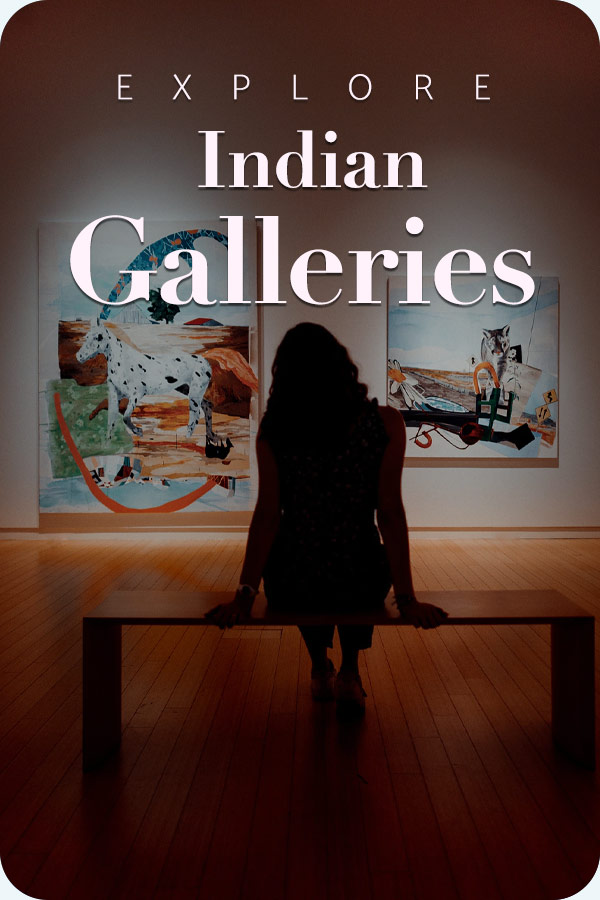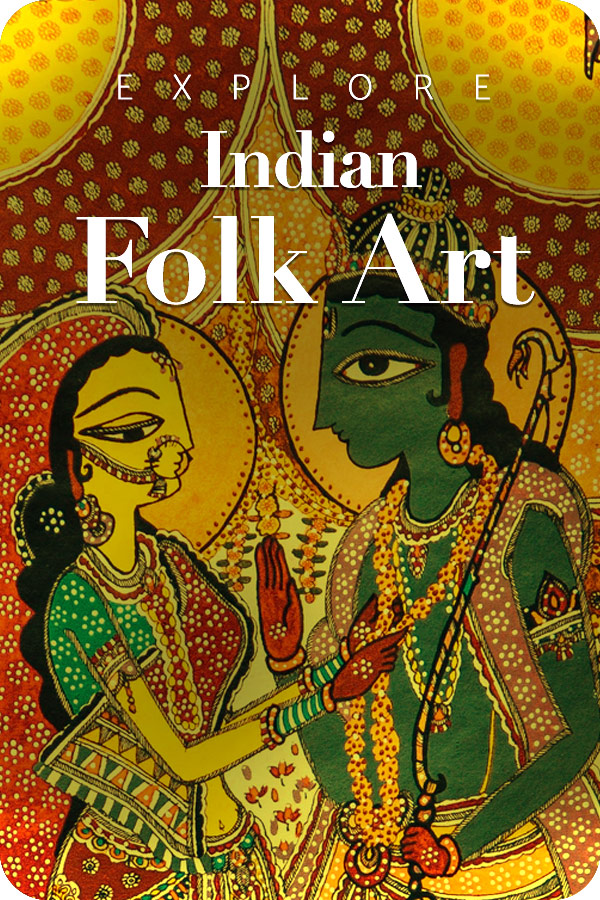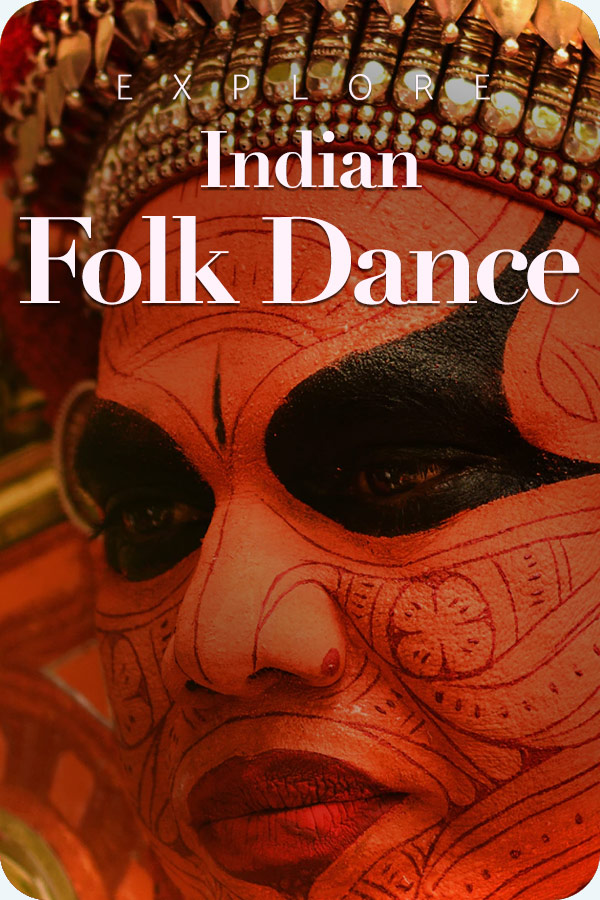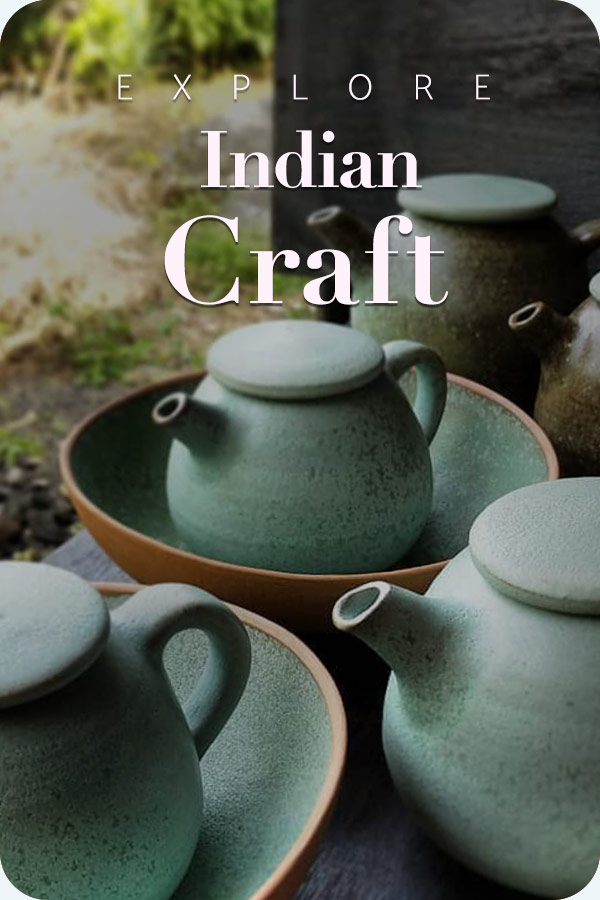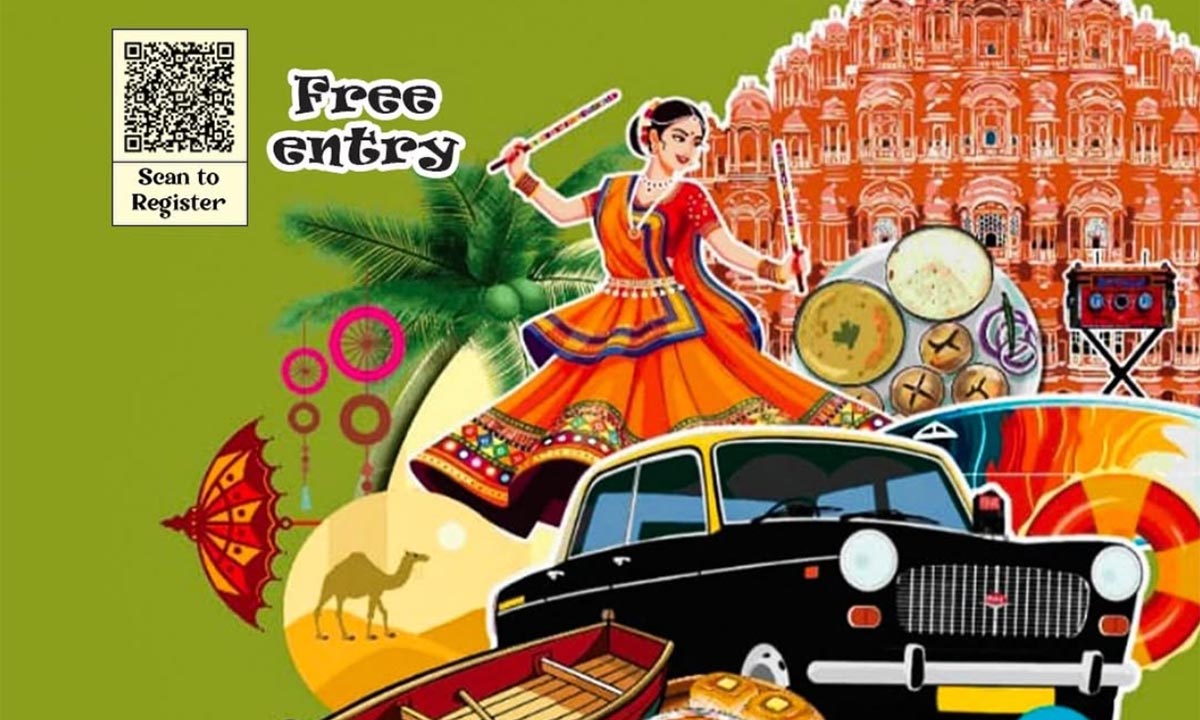
The Indian Mosaic
The culturally vibrant city of Hyderabad is hosting one of India’s largest celebrations of its artistic diversity, the Bharatiya Kala Mahotsav 2025. Organized by the Ministry of Culture, Government of India, in collaboration with Rashtrapati Bhavan, and supported by the Ministries of Tourism and Textiles, this nine-day festival aims to provide a pleasantly immersive experience for everyone, showcasing the vibrant culture of western India. The art, crafts, textiles, and traditions of regions such as Gujarat, Rajasthan, Goa, Maharashtra, and the Union Territories of Dadra & Nagar Haveli and Daman & Diu are widely displayed. Scheduled to run from November 22nd to 30th, 2025, the Mahotsav will transform the historic premises of the Rashtrapati Nilayam in Secunderabad into a grand, living museum.
The ceremonial inauguration is graced by the Honorable President of India, Smt. Droupadi Murmu. Her presence elevates the scope of the event to a national-level festival that reflects upon the government’s commitment to promote and preserve India’s rich cultural fabric. Entry in this festival is free, and registrations are encouraged through the QR code provided. The Rashtrapati Nilayam is the presidential winter retreat built in 1860 and located in the heart of Secunderabad cantonment area. The venue now opens its lawns, gardens, and heritage buildings for public engagement and cultural events. This festival is an attempt to make India’s diversity richer by making it more cohesive.
The Artistic Soul of Western India
The inaugural session of the Mahotsav in 2024 focused on North-Eastern and South Indian art, but this year the focus has shifted to the Western Indian crafts. This approach is worthy of applause as it aims to bring the distinct artistic and cultural traditions of each part of India through its yearly editions. Attendees will get to see a lot more than just regional products. The exhibition and sale section will feature dedicated state pavilions showcasing textiles like the famous Kutch Bandhani from Gujarat, the delicate Kota Doria sarees and Pattu cotton weaves from Rajasthan, the opulent Paithani sarees from Maharashtra, and the traditional Kumbi sarees from Goa. The Mahotsav also features unique crafts such as the handmade Kolhapuri Chappals, etc. Thus, the Mahotsav is running with a dual objective. Firstly, it aims at showcasing the vibrancy of India’s regional cultures and traditions; secondly, it aims to empower artisans and craft communities who are engaged in the production of tangible culture.
More than 250 artists, including celebrated Padma Shri awardees and other dignitaries, are going to be present at the venue. Beyond textiles and craft, the venue also scheduled a cultural lineup titled Pashchimalap, which literally means “Western Embrace”. This segment broadens the scope of the festival by showcasing the different folk dances and music from the represented regions. One can experience the Dhol-Tasha and the Lezim from Maharashtra, the Kalbelia and the Laal Angi Gair from Rajasthan, the Talvaar Raas and Garba from Gujarat, and the Samai and Ghumat Vadan from Goa. This cultural showcase is not just to serve entertainment, but to make people aware of the diversity we dwell in.
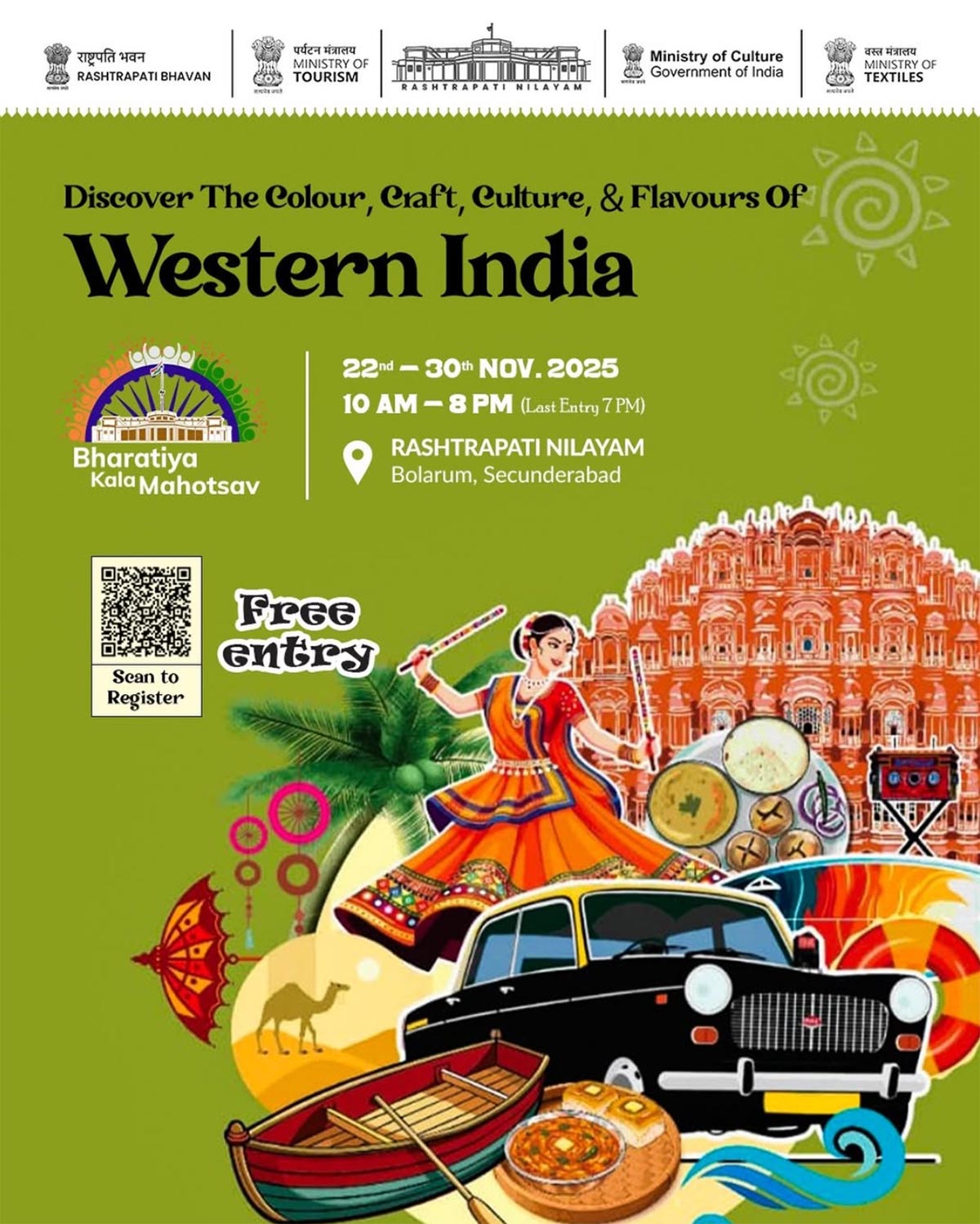
A regional food court is set up to host dozens of stalls offering authentic regional delicacies. A dedicated ‘literary corner’ hosts a book exhibition and sessions with Sahitya Akademi awardees, making it not only a place of delight, but of intellectual engagement as well. Some new additions include a studio kitchen for live cooking demonstrations, a GI-tagged product section, and a youth activity zone. By chipping all these elements together, the Mahotsav makes sure that it aptly appeals to people of all age groups and is able to be more and more inclusive. This Mahotsav promotes the idea of Ek Bharat Shreshtha Bharat (One India, Great India).
Exhibition Details
| Aspect | Details |
|---|---|
| Event Name | Bharatiya Kala Mahotsav 2025 (Second Edition) |
| Theme Focus | Cultural, Artistic, and Culinary Heritage of Western India |
| Participating Regions | Gujarat, Maharashtra, Rajasthan, Goa, Dadra & Nagar Haveli, and Daman & Diu |
| Dates | November 22 – 30, 2025 (10:00 AM to 8:00 PM) |
| Inauguration Date | November 21, 2025 (by President Droupadi Murmu) |
| Venue | Rashtrapati Nilayam, Bolarum, Secunderabad, Hyderabad |
| Key Attractions | Pashchimalap Cultural Show, State Handloom/Handicraft Pavilions, Regional Food Court, Literary Corner |
| Visitor Entry | Free (Registration online or on-spot available) |
Key Highlights
- Craftspeople will showcase their traditional techniques, regional materials, weaving, pottery, and more.
- Textile pavilions shall highlight the specific weaving and embroidery traditions of Western India, including Kutch embroidery, Bandhani, Paithani, etc.
- Dedicated food courts are set up to serve local delicacies from the participating states/UTs to connect culture with taste.
- Youth-engagement & digital zones ensure immersive experiences; selfie-zones, interactive installations are set up to appeal to younger visitors.
- Dance, music, regional theatre, and cultural forms provide a live expression of heritage.
- Geographical-Indicator (G.I.) Product Zone is set up to showcase G.I. certified crafts and products, bringing attention to their origin and value.
- The significance of the Rashtrapati Nilayam as a historical site adds gravitas to the Mahotsav, linking national heritage with regional culture.
A Deep Dive
From a practical point of View, the festival is designed to be highly inclusive. The provisions of free entry and flexible booking boost participation and make the festival more accessible to people from all walks of life. As a national-level event, it ensures that the spontaneity of visitors is maintained. Also, this is an incredible opportunity for Indian craftsmen to reach a broader pan-Indian audience. Thus, the 2025 Mahotsav is an attempt to stitch together multiple layers: regional heritage, national identity, craft economy, youth engagement, and heritage tourism.
Takeaway
The Bharatiya Kala Mahotsav at Rashtrapati Nilayam represents a deeply promising model of cultural diplomacy within India itself. The regional artisans are often marginalised and are subjected to niche markets and elite museum displays. The festival recognizes the gap that exists between them and offers an inclusive platform to present their craft in a meaningful manner. Another important aspect highlighted by the festival is that of “localization”. Western India’s craft traditions must be contextualised not as tourist-friendly objects but as living practices rooted in communities, identities, and socio-economic networks.
This festival offers a blueprint of critical intervention by the state to celebrate and sustain India’s decentralized cultural economy. In a rapidly globalizing world, such festivals provide a necessary platform for traditional artisans and performers whose livelihoods depend on showcasing their ancestral skills.
This festival reminds us that culture is not simply an adornment of public life, but the very foundation of national unity. It reminds us not only of “unity in diversity” but also of the fact that India’s true strength lies in its stunning cultural diversity. The festival ensures that the unique arts and traditions of Western India receive the deserved recognition, dignity, and economic sustenance in the heart of South India.



